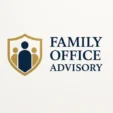Aircraft & Yacht Governance #
Aircraft and yacht governance defines the structures, policies, and operational oversight required to manage private aircraft, helicopters, and yachts owned or used by UHNW families. These assets carry significant financial, regulatory, and safety obligations. A formal governance model ensures compliant operation, cost efficiency, risk mitigation, and a smooth user experience for family members and their guests.
Context & Importance #
Private aircraft and yachts are high-value assets involving complex operational ecosystems, including crew hiring, maintenance, insurance, registration, chartering rules, and international regulations. Mishandled governance can lead to safety risks, legal violations, tax penalties, and reputational damage. Family offices therefore establish structured oversight to ensure that management companies, captains, crew, and advisors operate with accountability and transparency.
Core Components of Governance #
- Ownership structure: Direct ownership, special-purpose vehicles (SPVs), leasing structures, or charter arrangements.
- Registration & flag selection: Jurisdictional choices affecting tax, privacy, safety standards, and operating rules.
- Insurance policies: Hull, liability, crew, passenger, war, piracy, and environmental coverage.
- Crew management: Hiring, background checks, training, rotation schedules, payroll, and immigration documentation.
- Operational oversight: Maintenance, inspections, certifications, safety management systems (SMS), and compliance logs.
- Budgeting & reporting: Cost transparency, repair forecasting, and fuel, dockage, and overhaul expenses.
- Use policies: Rules for family trips, guest access, charter use, cost sharing, and etiquette.
Aircraft Governance #
Private aviation involves strict regulatory and safety requirements. Proper governance includes coordination with aviation management companies, pilots, maintenance teams, and regulatory authorities.
- Regulatory compliance: FAA/EASA rules, Part 91 vs Part 135 operations, flight logs, and crew licensing.
- Maintenance management: Scheduled checks, engine programs, avionics updates, and airworthiness documentation.
- Safety programs: Safety Management System (SMS), flight risk assessments, emergency protocols.
- Operational planning: Routing, weather risk analysis, ground handling, and international permits.
- Charter decisions: Availability, revenue potential, and compliance implications.
Yacht Governance #
Yachts require maritime compliance, crew management, and extensive operational planning. Governance ensures safety, efficiency, and protection against liability.
- Flag state rules: Compliance with maritime law, MLC regulations, and safety inspections.
- Port & territorial regulations: Customs, immigration, eco-rules, and local navigation requirements.
- Crew oversight: STCW training, certifications, rotation plans, and employment compliance.
- Maintenance & refit: Hull surveys, engine overhauls, dry-docking schedules, and onboard systems management.
- Security controls: Anti-piracy protocols, onboard monitoring, and safe rooms where needed.
- Guest management: Onboard service standards, provisioning, medical kits, and safety briefings.
Implementation & Best Practices #
- Create SPVs: Separate ownership structures to manage liability and tax considerations.
- Conduct due diligence on management firms: Assess safety records, certifications, transparency, and financial stability.
- Use formal charters & manuals: Document crew policies, operational standards, and onboard procedures.
- Implement budgeting controls: Review costs monthly; benchmark against industry standards.
- Ensure continuous compliance: Track certifications, inspections, and regulatory renewals.
- Prioritize safety: Provide emergency training, onboard drills, and updated equipment.
- Establish crisis protocols: Plans for medical emergencies, mechanical failures, piracy, and security risks.
- Review insurance annually: Adjust for valuation changes, new destinations, or updated risk profiles.
Common Challenges #
- High operating costs and insufficient cost transparency.
- Complex cross-border compliance and tax obligations.
- Crew turnover or performance issues.
- Safety risks due to inadequate maintenance.
- Liability exposure in charter arrangements or guest usage.
- Environmental compliance and emission standards.
See Also #
- Concierge, Real Assets & Lifestyle Administration
- Family Security & Risk Protocols
- Vendor Management & Outsourcing Strategy
- Risk Management & Reporting




